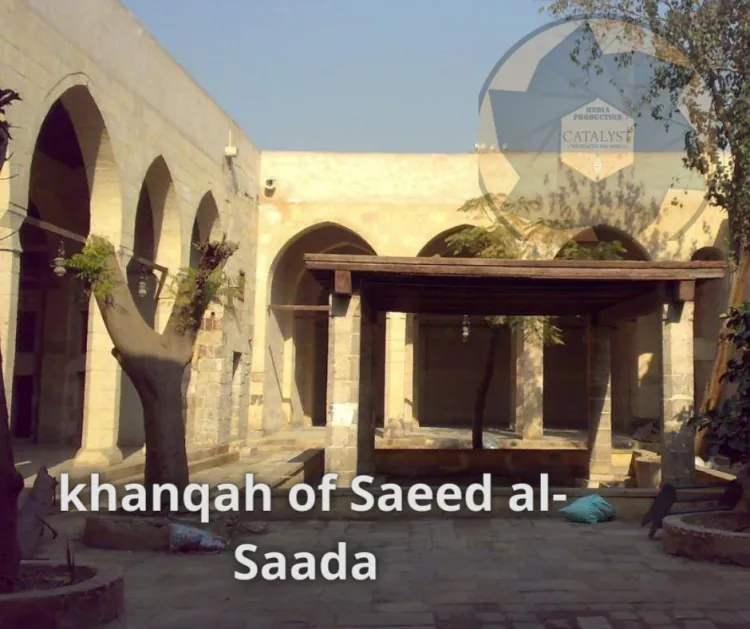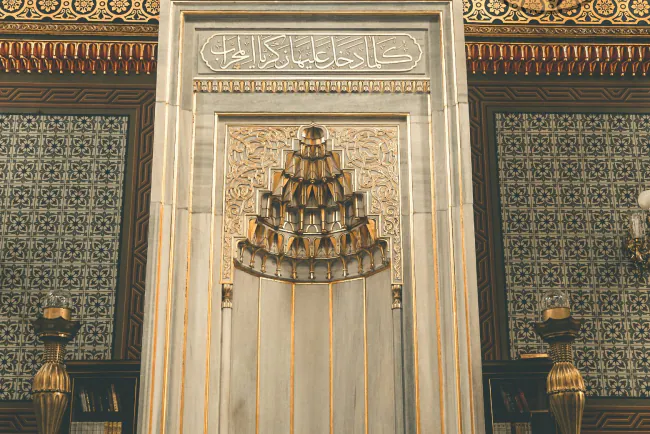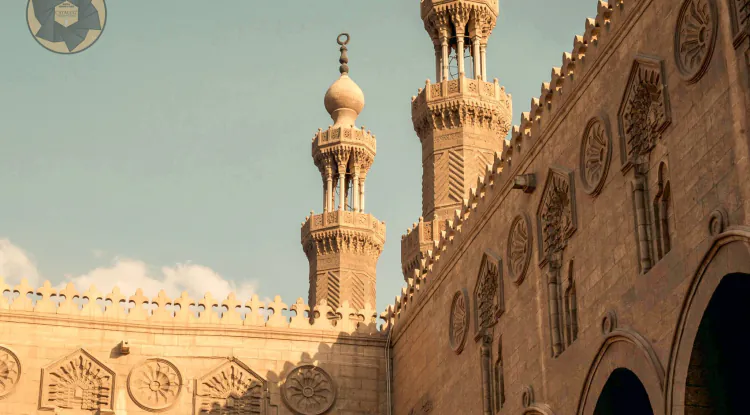khanqah of Saeed al-Saada

| Date of foundation | Before 564 AH / before 1168 AD |
| Specific classification | Khanqah |
| Effect status | exists |
| Archaeological area | north of Cairo |
| Location | Al-Gamaleya Street, in front of the Wikala of Odeh Bash |
Khanqah:
It is a Persian word meaning khan, which means the house and the eating place designated for the king. In addition, it means the house where the Sufis stay and reside.
The founder:
He is Al-Nasir Salah al-Din Yusuf bin Ayyub Ibn Shadi Ibn Marwan. He was born in 1137 AD in Tikrit - Iraq, and died on March 4, 1193 AD in Damascus. He eliminated the Fatimids and their Shiite doctrine in Egypt, and established the Ayyubid state in Egypt, until he became the Sultan of Egypt and the Levant.
nomination of the khanqah :
It was attributed to the title of one of the employees of the Fatimid state, and he was the owner of the house - the palace that he built in Cairo in the courtyard of Bab Al-Eid opposite the house of the Fatimid Ministry, which is currently known as the Khanqat Al-Jashinkir.
This khanqah was turned into a residence designated for housing Sufis arriving from different countries and nationalities, and it was equipped with all the supplies required to devote themselves to worship at the hands of Sultan Saladin Al-Ayyubi, who had a great interest in them.
Its area:
This khanqa occupied a large area and was characterized by its complete construction. It did not need restoration or additions except for a bathroom attached next to it.
Architectural description:
It is a simple stone façade, and from it there is an open square middle court surrounded by four iwans, each of which is used for studying, learning, and dhikr. Teaching was done in it by scholars and sheikhs with a great degree of fame and knowledge, as the northwestern iwan was designated for Sufi retreats, while The south-eastern iwan is considered one of the most important iwans, as it was divided into three porticoes. It overlooks the sanctuary with a colonnade consisting of five arches supported by four octagonal stone supports. This iwan contains the mihrab.
This khanqah enjoyed an internal system and arrangement for carrying out worship and the function of dhikr, as the sheikh of the khanqah at that time headed the dhikr council. The khanqah initially did not contain a mosque until the Mamluk era, and a minaret and a pulpit were added to it.
This is in the style of multi-functional religious facilities in the Mamluk era. The khanqah also contained a medical committee consisting of a doctor, a surgeon, a surgeon, and a pharmacy equipped with medicines and drinks to maintain the health of the Sufis, who were carefully selected.
the main entrance:
It is a wooden door consisting of two leaves, devoid of decoration, surmounted by a horseshoe-shaped arch. To the right of the entrance to the khanqah is the founding text.
Renovations:
Al-Aziz Othman bin Saladin renewed it in 593 AH / 1196 AD.
The Mamluks took care of this khanqah until it maintained its prestige, rituals, and endowments allocated to it and others, and multiple names, including the khanqah of Sa’id al-Sa’ada, al-Salhiyya, and the Sufi circle knew it.
What's Your Reaction?






















